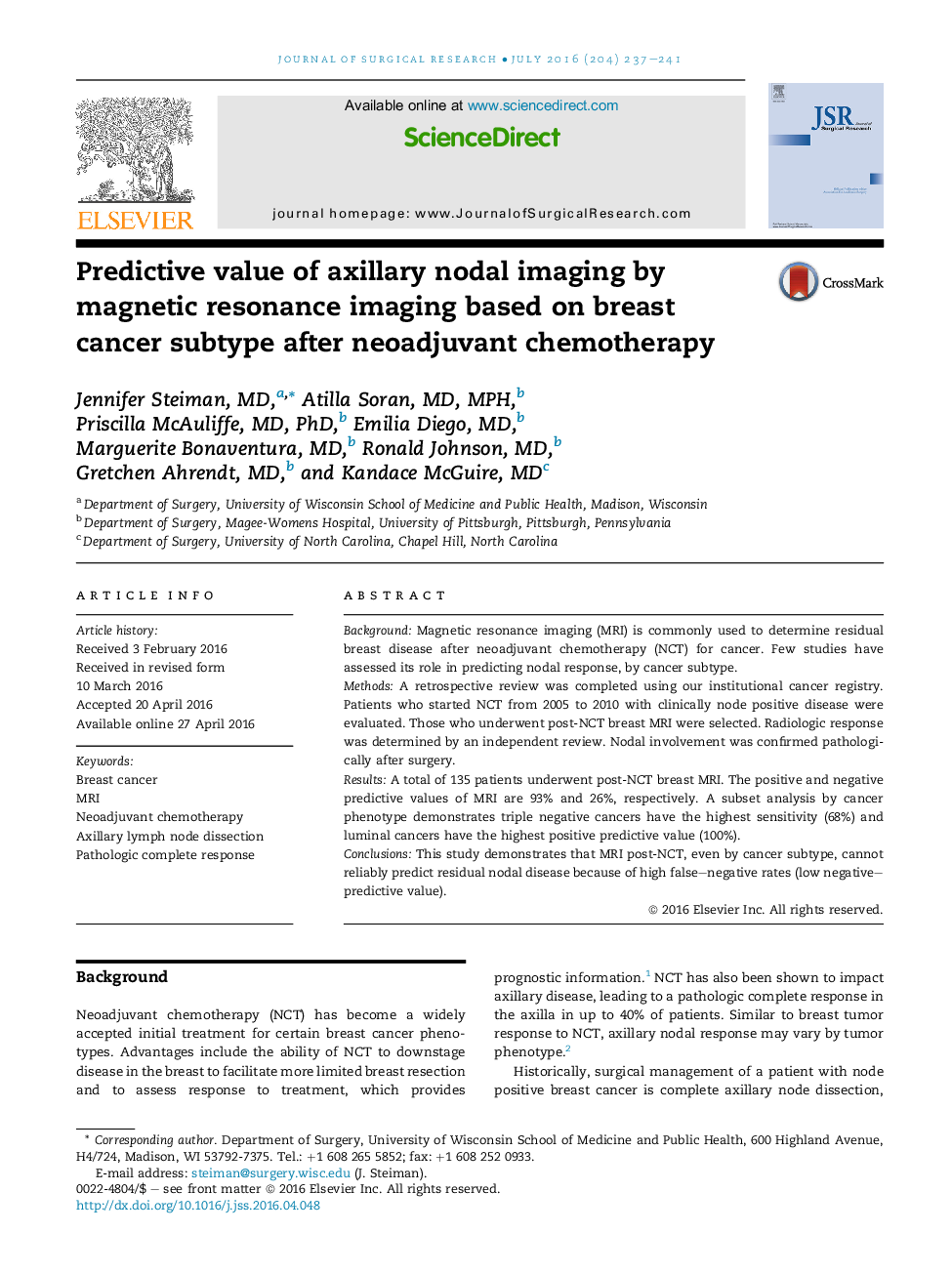| Article ID | Journal | Published Year | Pages | File Type |
|---|---|---|---|---|
| 4299163 | Journal of Surgical Research | 2016 | 5 Pages |
BackgroundMagnetic resonance imaging (MRI) is commonly used to determine residual breast disease after neoadjuvant chemotherapy (NCT) for cancer. Few studies have assessed its role in predicting nodal response, by cancer subtype.MethodsA retrospective review was completed using our institutional cancer registry. Patients who started NCT from 2005 to 2010 with clinically node positive disease were evaluated. Those who underwent post-NCT breast MRI were selected. Radiologic response was determined by an independent review. Nodal involvement was confirmed pathologically after surgery.ResultsA total of 135 patients underwent post-NCT breast MRI. The positive and negative predictive values of MRI are 93% and 26%, respectively. A subset analysis by cancer phenotype demonstrates triple negative cancers have the highest sensitivity (68%) and luminal cancers have the highest positive predictive value (100%).ConclusionsThis study demonstrates that MRI post-NCT, even by cancer subtype, cannot reliably predict residual nodal disease because of high false–negative rates (low negative–predictive value).
